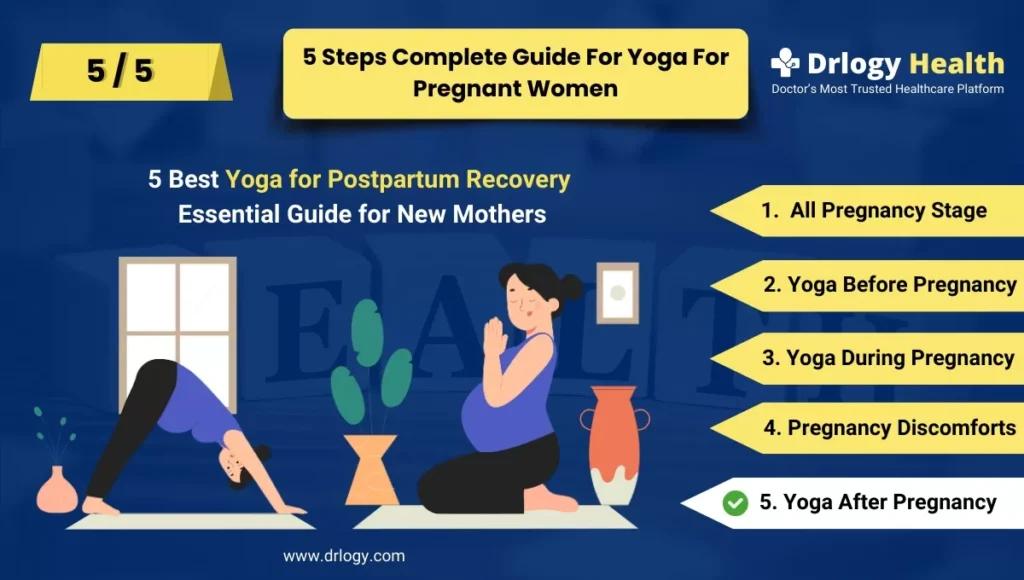Postpartum yoga is more than just a fitness trend; it’s a nurturing practice designed specifically for new mothers navigating the challenges of recovery after childbirth. Are you feeling overwhelmed by the physical and emotional changes that come with motherhood? This gentle practice can help ease your transition, providing support for your body and mind. In this article, we’ll delve into the essentials of postpartum yoga, including its significance, when to start, where to practice, and tips to enhance your experience.
With a focus on core strength, emotional well-being, and bonding with your baby, postpartum yoga is a holistic approach to recovery that you won’t want to miss.
Understanding Postpartum Yoga
So, what exactly is postpartum yoga? Simply put, it’s a tailored yoga practice that supports new mothers as they heal after giving birth. This form of yoga emphasizes gentle poses and breathing exercises, aiming to restore your strength, flexibility, and balance. It recognizes the unique physical and emotional transformations women experience during this period, ensuring you feel supported as you reclaim your body.
The Importance of Postpartum Yoga
Promotes Physical Recovery
Engaging in postpartum yoga can facilitate healing by fortifying your core, pelvic floor, and back muscles, which often weaken during pregnancy.
Enhances Emotional Health
This practice can significantly reduce stress and anxiety, helping to balance your hormones and mitigate postpartum depression. It fosters a sense of community that is invaluable during this transformative time.
Strengthens Bonding with Your Baby
Involving your baby in yoga can enhance your connection, creating a shared activity that nurtures closeness while you both enjoy the benefits of movement.
Prioritizes Self-Care
Amid the demands of motherhood, carving out time for yourself is crucial. Postpartum yoga encourages you to focus on your well-being, which is vital for sustaining your energy and resilience.
When is the Right Time to Start?
The timeline for beginning postpartum yoga varies among individuals. Although many experts suggest waiting until after your six-week postpartum check-up, it’s crucial to consider your unique circumstances. If you experienced a cesarean section or complications during delivery, you may need additional time. Always consult your healthcare provider before embarking on any new exercise routine.
Where Can You Practice Postpartum Yoga?
At Home
Online classes and video tutorials offer the convenience of practicing yoga in your own space, making it easier to fit into a busy schedule.
Yoga Studios
Consider joining a local studio that specializes in postpartum classes. These settings can provide expert guidance and a supportive community of fellow new mothers.
Community Centers
Many community centers offer affordable yoga classes for postpartum recovery, creating an excellent opportunity for social interaction.
Outdoor Spaces
Practicing yoga outdoors can be refreshing. Fresh air and natural surroundings enhance relaxation, benefiting both you and your baby.
How to Begin Your Postpartum Yoga Journey
Consult Your Healthcare Provider
Before diving into any new exercise routine, it’s wise to get the green light from a healthcare professional to ensure safety.
Choose the Right Class
Look for yoga classes specifically designed for postpartum recovery. These classes incorporate modifications to suit your needs.
Listen to Your Body
As you ease back into your practice, pay attention to your body’s signals. It’s essential not to rush the process, especially in the early stages.
Incorporate Your Baby
Many classes welcome babies, making it easier to bond while you practice. This can turn your yoga time into a delightful shared experience.
Stay Consistent
Even short, regular sessions can have profound benefits for both your physical health and emotional state. Aim for a few minutes each day.
Helpful Tips for Practicing Postpartum Yoga
Start Gently
Begin with simple stretches and breathing exercises to gradually ease back into movement.
Emphasize Core and Pelvic Floor
Target these areas to support your recovery effectively. Specific exercises can help rebuild strength.
Utilize Props
Incorporating yoga props like blocks and straps can enhance comfort and support during your practice.
Stay Hydrated
Keep your water intake up before, during, and after your sessions, especially if you’re breastfeeding.
Join a Community
Consider participating in a postpartum yoga group for extra support and motivation. Connecting with others can be incredibly uplifting.
Potential Risks of Postpartum Yoga
Avoid Overexertion
Pushing yourself too hard can lead to injuries. Always listen to your body and progress at a pace that feels right for you.
Pay Attention to Posture
Incorrect alignment can result in strain. Seek guidance from certified instructors to ensure you’re practicing safely.
Be Cautious with Diastasis Recti
If you have diastasis recti, certain poses might worsen this condition. Modify your practice as needed and consult with a healthcare professional.
Consider Pelvic Floor Issues
If you’re experiencing pelvic floor dysfunction, be mindful of poses that place undue pressure in that area. Focus on gentle strengthening instead.
Consult About Medical Conditions
If you have any medical issues or complications from childbirth, discuss your plans with your healthcare provider before starting postpartum yoga.
By understanding the nuances of postpartum yoga, you can embark on a fulfilling journey of recovery and self-care. This practice not only nurtures your body but also fosters connections with your baby and fellow mothers. Embrace this holistic approach to healing, and discover the many benefits it can bring to your life.




